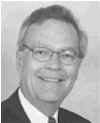|

|
Grave
Matters:
Cemeteries
in Virginia
Near
the James River, in Richmond’s historic Hollywood
Cemetery, a large cast-iron dog guards the grave of
a young girl, Florence Rees. A writer for the Washington
Post found the canine so inviting, she gave it
an obligatory pat on the head. Other visitors, she
reported, are so intrigued with this odd memorial,
that they leave trinkets such as coins or a collar
made of ribbon (“Of Grave Concern: At Three
Stately Old-South Cemeteries in Virginia, Grounds
for Reflection,” October 27, 2004).
Except
for Arlington’s National Cemetery, Hollywood –
named for the groves of holly trees on its grounds
– is perhaps one of the Old Dominion’s most
distinguished graveyards. Among the 80,000 buried
there are two presidents – James Monroe and John
Tyler – six governors, 25 generals, the 4-year-old
son of Jefferson Davis, who died in a fall from the
Confederate White House balcony, the novelist Ellen
Glasgow and 22,000 Confederate soldiers.
Hollywood
is but one of thousands of church, commercial,
community, family, military, slave and even national
cemeteries in the commonwealth. It was designed in
1847 as part of the "rural
cemetery" movement, which in turn spawned
the development of urban parks. Nineteenth-century
proponents of “rural cemetery” design believed
cemeteries should be designed as destinations for
leisure and respite, as well as resting places for
the departed. Such cemeteries were placed around
elevated views on the outskirts of cities. Landscape
architects would select a hilly, wooded location,
thin trees and plant shrub groupings that directed
the eye toward broad vistas. A gate would separate
the visitor from daily life and a winding drive was
designed to slow one’s pace.
As
the major staging area for the Civil War, the
commonwealth has at least 15 national cemeteries,
including the only Jewish military cemetery outside
of Israel. The
Cemetery for Hebrew Confederate Soldiers on
Shockoe Hill in Richmond is the resting place for
close to 30 soldiers. The
City Point National Cemetery in Hopewell, which
served as a Union supply depot, was established to
re-inter Civil War casualties from seven surrounding
hospital cemeteries, as well as battlefield plots. The
Balls Bluff National Cemetery in Leesburg in
Loudoun County has the remains of 54 soldiers who
died during the Battle of Balls Bluff during the
Civil War. The name of only one is known.
African-American
cemeteries are also a part of the Virginia
landscape. The
Old City Cemetery in Lynchburg dates from 1806.
More than three-quarters of the graves are for
African-Americans, including pre-Civil War slaves
and free blacks. Some of the plots are marked only
with a rock or a favorite toy on a child’s grave.
In
Norfolk, an African-American Civil War Memorial
stands near the burial spots for black Union
veterans in the West
Point Cemetery. James E. Fuller, a former slave
and former quartermaster in the First Union States
Colored Cavalry led the effort to erect the monument
in 1909.
In
2004, a researcher discovered a slave cemetery near
Lexington that had markers with African symbols
etched on them. The ideograms are from the West
African Igbo culture and could be the only such
examples in the U.S. (“Virginia Cemetery Provides
Glimpse to Slave-Trading Past,” Black Issues in
Higher Education, April 8, 2004).
As
development has encroached on rural areas in the
commonwealth, more and more churches and families
are researching their graveyards to make sure plots
will not be disturbed, or, if needed, can be moved.
Forensic specialists and archeologists from the
Smithsonian Institute have been involved in
researching Civil War graves at an Episcopal Church
in Culpepper and moving graves away from possible
development at a Virginia plantation in Manassas
(“Around the Mall and Beyond: Excavating a Civil
War Burial Site,” Smithsonian, 1990.)
Two
months ago, archeologist Mark Jacobs, who works with
a consulting group, led a team that disinterred more
than 30 bodies from the 19th-century Guinea Road
cemetery in Fairfax County before the Department of
Transportation widens an intersection near the site
– thought to be a free black or slave cemetery.
The bodies will be reburied in a cemetery just down
the road. Team members sifted through dirt carefully
to find every bone fragment and coffin nail. Out of
respect, no one ate, drank, smoked or listened to
music as they worked. (“History Is Moved, One
Skeleton at a Time,” Washington Post, April
26, 2006.)
As
sources for art, natural beauty and history,
Virginia’s cemeteries tell many tales. But as
cremation becomes more popular, traditions are
changing. In 2002, the Wall Street Journal
reported that the University of Richmond had built a
“columbarium” on campus and was offering niches
for urns to alums for $3,000 each. In
Charlottesville, the University of Virginia would
provide four-urn slots for $1,800 a piece. (“The
New School Spirit: Burial Plots for Alums –
Cash-Hungry Universities Sell Space in Campus
Vaults; ‘You’ll See Me in Box 12,’” July 10,
2002).
If
cremation becomes more popular, future historians
and archeologists may have a more difficult time
piecing together stories from the graves of
Virginia’s dearly departed.
NEXT:
Behind Bars: Virginia’s Jails and Prisons
--
June 12, 2006
|
|
